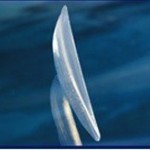Synthetic implants are widely used and important for many types of facial augmentation. Without them many aesthetic facial procedures would not be possible or would be far more difficult to perform and have higher risks. The risk of infection with facial implants is acknowledged by surgeons and patients alike. Fortunately facial implant infections are very low due to the highly vascularized tissues of the face with a risk probability of 1% to 2%. The cause of facial implant infections, like implants infections anywhere else on the body, is the development of a biofilm layer on the implant.
What is a biofilm? In a wet environment bacteria can organize and attach to a solid surface. Once attached they can multiple and create a biofilm layer. The bacteria excrete a material known as an extracellular polymer substance (EPS) which encases the bacteria and helps protect it. It also offers an increased resistance to antibiotics as well as to the bodies own immune responses. This resistance makes it frequently necessary to remove the implant for resolution of the infection.
In the July/August 2016 issue of the JAMA Facial Plastic Surgery journal, a paper entitled ‘Analysis of Facial Implants for Bacterial Biofilm Formation Using Scanning Electron Microscopy’ was published. In this clinical study an analysis was done on seven (7) facial implants that were extracted. This included four (4) silicone and (3) porous polyethylene (Medpor) Implants, most of which were from the nose. (6 out of 7). Scanning electron microscopy images was done to assess for the presence or absence of biofilm formation. All porous polyethylene implants showed biofilm formation to various degrees, some areas were classified as severe. The only 2 implants without any evidence of biofilm were silicone implants. Of the other 2 silicone implants, they had varying degrees of moderate to severe biofilm formation.

It also speaks to the fact that once a facial implant develops, antibiotics alone are not likely to solve it because of the persistent biofilm layer. Either the implant has to be removed or it needs to be removed, cleaned/re-sterilized and then immediately re-inserted for a successful infection resolution.
Dr. Barry Eppley
Indianapolis, Indiana


